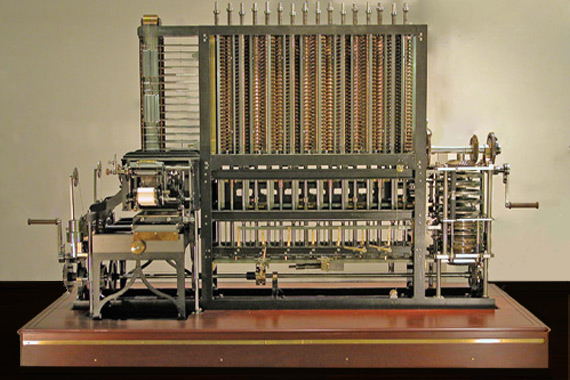Charles Babbage was born in London Dec. 26, 1791 in London. He dedicated his entire life to the vision of a mechanical machine that would perform calculations.

In Babbage’s times there was very high error rate in the calculation of math tables. Babbage planned to find a new method that could be use to make it mechanically, removing the human error factor.
The Difference Engine
Babbage presented his proposal for a “difference engine” to the Royal Astronomical Society on Jun 14, 1822. It was a machine to calculate astronomical and mathematical tables. The proposed machine was able to calculate polynomials by using a numerical method called the differences method. The Society approved the idea, and the government granted him £1500 to construct it, in 1823. However, after many years of problems, the government officially abandoned the project in 1842.
The Analytical Engine
Between 1833 and 1842, Babbage tried to build a machine that would be programmable to do any kind of calculation, not just ones relating to polynomial equations. The first breakthrough came when he redirected the machine’s output to the input for further equations. The analytical engine used punched cards adapted from the Jacquard loom to specify input and the calculations to perform. The engine consisted of two parts: the mill and the store. The mill, analogous to a modern computer’s CPU, executed the operations on values retrieved from the store, which we would consider memory.
Second Difference Engine
Between October 1846 and March 1849, Babbage started designing a second difference engine using knowledge gained from the analytical engine. It used only about 8000 parts, three times fewer than the first. It was a marvel of mechanical engineering. Unlike the analytical engine that he continually tweaked and modified, he did not try to improve the second difference engine after completing the initial design. Babbage made no attempt to actually construct the machine. His 24 schematics remained in the Science Museum archives until a full-size replica was built 1985-1991 to celebrate the 200th anniversary of Babbage’s birth. It was 11 feet long, 7 feet high and 18 inches deep, and weighted 2.6 tons. It worked flawlessly.

There are many articles on Babbage’s life and achievements. This article only is an appetiser. Also, watch this video to see his incredible machine in action: http://youtu.be/jiRgdaknJCg.